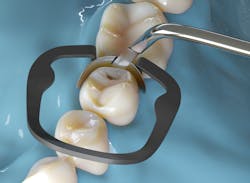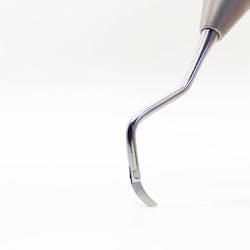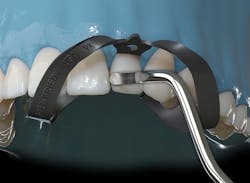Why premium instrumentation matters in restorative dentistry
The world of dentistry is constantly evolving, and one of the most exciting long-term evolutions has been in the restorative composite category. Materials are becoming more malleable, stronger, and longer lasting. Shouldn't hand instrumentation evolve to work smarter with these materials?
Recent innovations in composite instrumentation are changing the way clinicians approach restorations, enabling finer details and a greater degree of artistry in the operatory. As cosmetic procedures continue to be highly requested, clinicians must ensure they are well outfitted with the instrumentation to deliver beautiful restorations.
So, how do you find the right instruments? Here are three questions to ask yourself:
- How flexible are the working ends?
- How thin is the profile?
- What is the construction of the handle?
Let's look at each of these questions individually to understand their importance.
How flexible are the working ends?
Restorative procedures are as much an art as they are a science. Placing and sculpting composite materials requires delicate movements, including very light, brush-like strokes to emulate the natural shading and anatomy of the tooth. Precision is the key to ensure proper restorations.
One new and innovative composite instrument from Hu-Friedy, the Akro-Flex, features nickel titanium (NiTi) working ends. This material is known for its super elasticity and shape memory effect, meaning it has extreme flexibility and rebounds back into place without deforming, like a brush on a canvas. The flexible NiTi working ends are ideal for creating fine anatomical details with delicate, artistic strokes.
Since brush tips are all disposable, conventional composite brushes cannot be used for a second time. Therefore, this new innovative NiTi brush-like instrument brings a solution to that sterilization problem too.
How thin is its profile?
While flexibility is critical when creating detail, so is a slim profile. Thinner working ends glide into tight, narrow interproximal spaces with ease. An instrument with a slender profile helps to complete restorations for three interrelated reasons:
- First, the instrument must be able to create a tight contact when used with accessory products, like an interdental matrix band.
- Second, the instrument must be able to delicately manipulate resin composite materials within small spaces.
- Third, the instrument must allow for clear intraoral visibility.
Taken together, this means that working ends need to be remarkably thin. Standard composite instruments tend to be rigid, and when working interproximally, that rigidity doesn’t allow for nimble manipulation of resin composite materials.
What is the construction of the handle?
While thin, flexible working ends are critical throughout restorative procedures, it is also important to consider the handle. From an ergonomics perspective, lightweight, larger-diameter handles provide increased comfort and reduced hand fatigue. They also provide increased control and manipulation, which is a key factor when crafting superfine details.
Additionally, a smooth handle is a must. This better protects against the accumulation of sticky composite materials, which prevents the build-up of excess material over time. Also, this ensures the instruments look newer for a longer time.
Putting it all together
Identifying the right instrument for restorative procedures comes down to finding the balance between flexibility, accessibility, and control:
- flexibility for enabling brush-like movements;
- accessibility for reaching narrow interproximal space; and
- control for manipulation of resin composite materials.
There aren’t many instruments that fulfill all of these requirements, but instruments such as the Akro-Flex utilize innovative construction and materials to compete in all three categories.
There are many different inputs when it comes to navigating purchasing decisions beyond pure performance, but it is critical to have a clear understanding of the clinical factors underpinning your choice. And with the right instrumentation in your armamentarium, you can be prepared to create beautiful, natural-like restorations time and time again.
Disclosure: Dr. Korkut is a key opinion leader for Hu-Friedy. Products mentioned are used in the regular course of practice.
Recommended:
Dental handpieces: What to consider before you buy (part 1) | By Glenn Williams
Take this patient and let’s see how your treatment plan compares to mine | By Dr. Stacey Simmons
Editor's note: This article first appeared in the Product Navigator, a twice-monthly newsletter that helps dentists and dental hygienists navigate their product decisions. To subscribe, visit the DentistryIQ subscribe page.
About the Author

Bora Korkut, DDS, PhD
Bora Korkut, DDS, PhD, is an academic, researcher, and lecturer based at Marmara University, Istanbul, Turkey, where he specializes in esthetic and restorative dentistry. His fields of interest include digital dentistry, direct resin restorations, CAD/CAM restorations, and macro dental photography. Dr. Korkut is a member of the Turkish Dental Association, Turkish Society for Restorative Dentistry, Turkish Academy of Esthetic Dentistry, and the Digital Dentistry Society.



